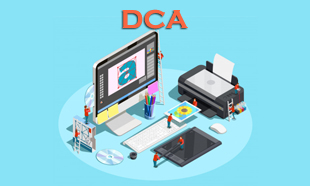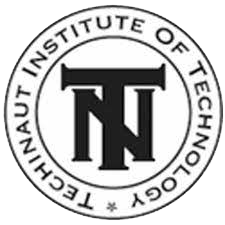1
A Deep Dive into the "Diploma in Computer Application (DCA)" Course at DINESH EDUCATION, a Techinaut Institute of Technology Franchise in SEMILIGUDA, ODISHA
In the rapidly evolving digital landscape, proficiency in computer applications is crucial for individuals seeking career opportunities in various industries. Recognizing this need, Dinesh Education, a franchise of Techinaut Institute of Technology, offers a six-month Diploma in Computer Application (DCA) course. Situated in Semiliguda, Odisha, this program aims to equip students with essential skills and knowledge in computer applications, including basic computer operations, software usage, and internet technologies. This essay provides a detailed overview of the course curriculum, covering its objectives and each section comprehensively.
THE OBJECTIVE OF THE COURSE:
The Diploma in Computer Application (DCA) course at Dinesh Education is designed to achieve the following objectives:
- Basic of Computer: Introduce students to fundamental concepts of computing, including hardware, software, and basic operations, to develop a foundational understanding of computer systems.
- Computer Organization: Familiarize students with computer architecture, components, and organization, including CPU, memory, storage, and input/output devices, to understand how computers function.
- Operating System: Provide knowledge and skills in operating system fundamentals, including installation, configuration, file management, and system maintenance, to ensure efficient usage of computer resources.
- Word Processing: Develop proficiency in word processing software, focusing on creating, formatting, and editing documents for various purposes, including reports, letters, and memos.
- Spreadsheet Package: Equip students with the ability to use spreadsheet software for data analysis, calculation, and visualization, including creating formulas, charts, and graphs.
- Presentation Package: Teach students how to create effective presentations using presentation software, including designing slides, adding multimedia elements, and delivering dynamic presentations.
- Introduction to Internet: Provide an overview of Internet fundamentals, including web browsing, search engines, online communication, and Internet security, to enable students to utilize Internet resources effectively.
- Electronic Mail: Familiarize students with email communication principles, including composing, sending, receiving, and managing emails, to facilitate professional communication in digital environments.
SECTION 1: BASICS OF COMPUTER
Fundamentals of Computing:
Introduction to computing concepts, including hardware, software, data representation, and computer history.
Computer Hardware:Overview of computer hardware components, including CPU, memory, storage devices, input/output devices, and peripherals.
Computer Software:Explanation of software types, including system software, application software, and programming languages, and their roles in computer operations.
.
SECTION 2: COMPUTER ORGANISATION
CPU and Memory:
Understanding the central processing unit (CPU) and memory hierarchy, including RAM, ROM, cache memory, and virtual memory.
Storage Devices:Explanation of storage devices, including hard disk drives (HDDs), solid-state drives (SSDs), optical drives, and flash drives, and their characteristics.
Input/Output Devices:Overview of input devices (keyboard, mouse, scanner) and output devices (monitor, printer, speakers) and their functions in computer systems.
SECTION 3: OPERATING SYSTEM
Introduction to Operating Systems:
Overview of operating system concepts, functions, types (Windows, macOS, Linux), and user interfaces.
File Management:Understanding file systems, directory structures, file operations (copy, move, delete), and file attributes in operating systems.
System Configuration:Basics of system configuration, including settings, control panel options, device management, and user accounts.
SECTION 4: WORD PROCESSING
Introduction to Word Processing:
Overview of word processing software (Microsoft Word, Google Docs) and their features for creating and formatting documents.
Document Formatting:Techniques for formatting text, paragraphs, and pages, including fonts, styles, alignment, indentation, and spacing.
Document Editing:Skills for editing documents, including inserting, deleting, copying, and moving text, as well as using find and replace functions.
SECTION 5: SPREADSHEET PACKAGE
Introduction to Spreadsheets:
Overview of spreadsheet software (Microsoft Excel, Google Sheets) and their features for data entry, manipulation, and analysis.
Data Entry and Formatting:Techniques for entering data, formatting cells, and applying styles, borders, and colors to enhance spreadsheet appearance.
Formulas and Functions:Understanding formulas, functions, and calculations in spreadsheets, including basic arithmetic operations, statistical functions, and logical functions.
SECTION 6: PRESENTATION PACKAGE
Introduction to Presentation Software:
Overview of presentation software (Microsoft PowerPoint, Google Slides) and their features for creating slideshows.
Slide Design:Design principles for creating visually appealing slides, including layout, background, color schemes, and graphics.
Adding Multimedia:Skills for incorporating multimedia elements, such as images, videos, audio, and animations, into presentations.
SECTION 7: INTRODUCTION TO THE INTERNET
Web Browsing:
Techniques for web browsing, including navigating websites, using bookmarks, tabs, and search engines (Google, Bing).
Online Communication:Introduction to online communication tools, including email, instant messaging, and social media platforms (Facebook, Twitter).
Internet Security:Awareness of internet security threats, including malware, phishing, and identity theft, and methods for protecting personal information online.
SECTION 8: ELECTRONIC MAIL
Email Basics:
Introduction to email concepts, including email addresses, mail servers, message composition, and sending/receiving emails.
Email Management:Skills for managing email accounts, including organizing emails into folders, using filters, and setting up auto-replies.
Email Etiquette:Guidelines for professional email communication, including proper formatting, tone, language, and etiquette.
CONCLUSION:
The Diploma in Computer Application (DCA) course at Dinesh Education offers a comprehensive curriculum covering essential computer applications and skills. By providing theoretical knowledge and practical training in software usage, operating systems, and internet technologies, the Course prepares students for various entry-level positions in the IT industry and beyond. With a focus on hands-on learning and real-world applications, Dinesh Education remains committed to empowering students with the skills and knowledge needed to succeed in the dynamic field of computer applications.
Lectures = 130 HRS
Practical/Tutorials = 130 HRS
Total = 260 HRS


